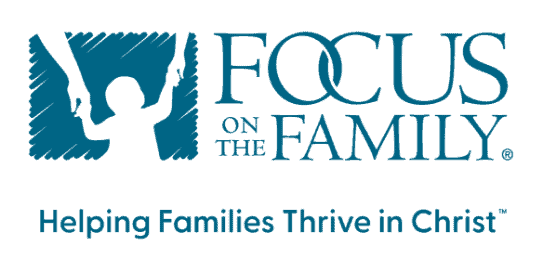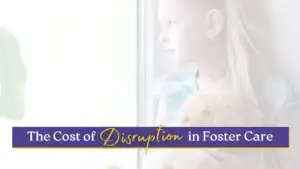The foster care system is different in every state. Each state has its own requirements, organizations, and processes. Below, you will find practical information about taking the next step to help vulnerable children in the Texas foster care system.
The Need for Foster and Adoptive Parents
There are over 27,0001 children in foster care in the state of Texas. There are over 6,000 sibling groups, and approximately one-third of sibling groups are split up2. Over 6,0003 children are legally available for adoption in Texas. And each day, there are youth aging out of the foster care system.
The need is great. Texas needs more foster families and adoptive families. Texas especially needs families open to sibling groups, teens, and children with special needs.
Foster Parent Criteria
The Texas Department of Family and Protective Services (DFPS) has set basic requirements for foster and adoptive parents. They must “be at least 21 years of age, financially stable, and responsible mature adults.”4 They must also complete all required paperwork and background checks. Foster parents must also maintain CPR and First Aid Certification, and their home must be open for safety inspections, among other requirements.
The Steps to Become Licensed in Texas
If you have an interest in fostering or adopting, do not hesitate to get started. Children and teens are waiting for someone like you! Keep in mind that families can withdraw from training at any point. Attending classes or filling out forms does not mean you will be forced to become a foster family. As long as the Lord continues to call you to foster or adopt, be brave in following His call.
Here are the general steps for becoming a licensed foster family in Texas.
Attend an Information Meeting
In Texas, the first step to becoming a foster or adoptive parent is to attend an information meeting.5 Both private foster care agencies and the Texas Department of Family and Protective Services (DFPS) host informational sessions. Here, prospective foster parents will learn about the responsibilities of a foster or adoptive parent. They can also ask any initial questions they may have to determine whether fostering or adopting is right for them.
During this informational meeting or shortly after, prospective foster parents can meet the staff they will be working with. At many faith-based private agencies, these introductions may take place at the informational meeting. For those working with DFPS, prospective families are invited to meet with DFPS staff to be assessed by the staff while learning more about the children in the foster care system.
Complete Foster Parent Training
The second step in becoming a foster or adoptive family is to attend training. Over the course of many weeks, prospective foster families learn skills to successfully parent children from hard places. Topics include child attachment, behavior intervention, effects of abuse and neglect, working with the child welfare system, and more. Prospective foster families must also become certified in First Aid and CPR.
Home Study, Background Checks, and References

An in-depth, in-person home study is one of the final steps to becoming a licensed foster home. During this time, a foster care social worker will talk with the members of the prospective foster family. This home study is an important step in pairing a foster family with a child or sibling group that would fit well into the home.
Prior to licensure, foster parents must pass criminal history background checks. All adults in the household must also pass an abuse/neglect check. The relative and non-relative references provided in a foster family’s application will be contacted. Once all paperwork and steps are complete, DFPS or the child placing agency may approve a foster home.
The Responsibilities of Foster Parents
Responsibilities vary slightly depending on whether a family wants to foster or adopt. But at the core of both fostering and adopting is love. While adoptive parents provide permanent homes and lifelong commitment to a child, foster parents provide temporary homes, support, and advocacy for children in the Texas foster care system.
Foster parents are part of a large team that serves children in foster care. As such, foster parents must be collaborative team players. They may interact with social workers, teachers, judges, CASAs, mentors, doctors, biological parents, and many others. In each interaction, foster parents have the chance to support safe reunification.
When foster families interact with biological families, the foster family can be a positive role model. By approaching biological parents with empathy, foster parents can be a part of God’s redemptive healing of a family. Christian foster families can reflect Christ’s love to the children in their care and their biological family.
Post-Placement Steps for Foster Families
Both foster and adoptive families in Texas need support. Many faith-based child placing agencies offer post-placement supportive services. Churches can also start foster and adoptive ministries to support families. In Texas, foster families continue to complete foster parent training hours each year that they are licensed. These training hours help foster families improve and learn new parenting skills.
In most cases, there is little to no cost to become a foster parent. Moreover, foster parents receive financial reimbursement for the care of children. The goal of foster care is safe reunification. However, if reunification is no longer possible for a child, DFPS or a private agency can assist Texas foster families in adopting the child or sibling group if they feel it is right for them. In fact, “nearly half the adoptions of children in DFPS foster care are by their foster families.”6
Not Called to Foster or Adopt?

Even if you do not feel called to foster or adopt, that does not mean you are not called to get involved in some way. In fact, as Christians, we are all called to care for vulnerable children. Even something small can make a big difference. Explore ways you can show love to children and their foster or adoptive family. Perhaps mentoring, volunteering with a bridge organization, or donating to a ministry is your calling. And even if you do not live in Texas, you can always pray for Texas children in the foster care system.
Whether you are called to foster, adopt, or support others, the most important thing is to get started. Children are waiting for you to act. Do not anything hold you back from changing a child’s life.
1 “CPS Placements: Children in Substitute Care on August 31.” Texas Department of Family and Protective Services.
2 “CPS Substitute Care: Siblings Placed Together.” Texas Department of Family and Protective Services.
3 “CPS Permanent Managing Conservatorship (PMC): Children Waiting for Adoption on August 31.” Texas Department of Family and Protective Services.
4, 6 “Requirements for Foster/Adopt Families.” Texas Department of Family and Protective Services.
5 “Steps to Become a Foster/Adoptive Parent.” Texas Department of Family and Protective Services.
















